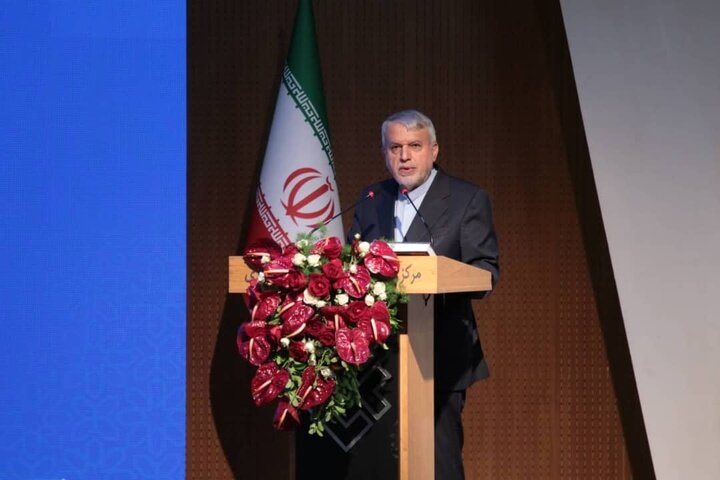Tehran – Iran’s Minister of Cultural Heritage, Tourism and Crafts, Seyed Reza Salehi Amiri praised the success of the Knowles travel season in 1404 (2025), describing it as one of the least satisfying issues in recent years.
He made his remarks at a ceremony held in Tehran on Saturday night to honor the selection of individuals who worked at the Travel Services Coordination Headquarters, which will oversee and manage domestic travel on Persian New Year’s holidays.
Calling the event a “historic day” on the government’s service calendar, Salehi-Amiri pointed out that the ceremony represents just a small portion of the 1.2 million individuals who worked tirelessly to ensure a smooth and memorable Nowuz for Iranian travelers.
The ceremony was attended by the first Vice President of Mohammad Reza Aref and many ministers and senior officials from the Department of Transport Research Center Hall.
Emphasizing the important role of Iran’s diverse attractions and abundant historic locations, Salehi Amiri said these are the major drivers behind the surge in holiday travel. “From the northern provinces and pilgrimage sites in Mashhad to cultural destinations in Kordestan, Kelmansha, Fars and Sistan Balchestan, the nation has become a vibrant hub of tourism,” he said.
Official figures show that over 36 million trips have been recorded during Nowruz Holidays, highlighting the minister’s description of the nation’s growing appetite for exploration and cultural involvement. He believes in Iran’s geographical and cultural diversity as key motivators for this rise in travel activities.
Salehi-Amiri also points to the launch of 1,000 “Nowruzgah” cultural hubs dedicated to cherishing Nowruz, the Persian New Year across the country, calling it a model of cultural equity and balanced development. He noted that visits to lesser known destinations such as the ancient locations of Shahr-e Sukhteh, historic caravan sera in Semnan, cities such as Shush (Susa), Shushtar and Jiroft provided citizens with a unique opportunity to experience Firsthand, an ancient Iranian heritage site.
In another important highlight, the Minister mentioned recent archaeological discoveries in Abdanan, Ilam. Iranian researchers have identified the original stone quarry that Iranian researchers used to construct the palace in Achamenid in Susa. “This is an incredible step in understanding Achemenid architecture,” he said.
Salehi-Amiri concluded by acknowledging existing shortcomings, but praised the headquarters’ dedication, saying:
A total of 36,519,671 trips were recorded between March 15th and April 4th, according to data compiled by Traveling Services Coordination Headquarters.
During the same period, 60,970,523 accommodations were registered with official, semi-official and emergency accommodation. Of the latter figures, 1.37 million accommodations occurred at official accommodations.
In the provinces of Mazandaran, Gilan, Korasan Razabi, Tehran and Isfahan, Mashhad, Shiraz, Tehran, Isfahan and Bandar Abbas were ranked among the top cities visited during the mentioned Knowles Holid.
Nowruz celebrations officially begin in Iran and other countries in several other countries in the West and Central Asia to commemorate the arrival of spring and the rebirth of nature. Intercultural celebrations mean —new – and rouz – day – in Persian. Therefore, Nowruz means a new day and symbolizes a new beginning.
Over time, Nowruz developed development and expansion, incorporating new social, religious and cultural influences. Nowruz traditions and customs vary from country to country, but there are many unified features. In most areas, people perform ritual dances such as jumping over fires and streams before the festival. Many households also refill their water supply on the last Wednesday of the year.
Recognizing the importance of this ancient ritual, Nowruz was engraved in 2009 on the UNESCO list of human heritage intangible cultural heritage. Furthermore, in 2010, the United Nations General Assembly declared International Knowles Day on March 21st.
morning

